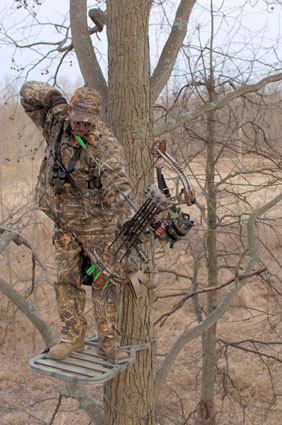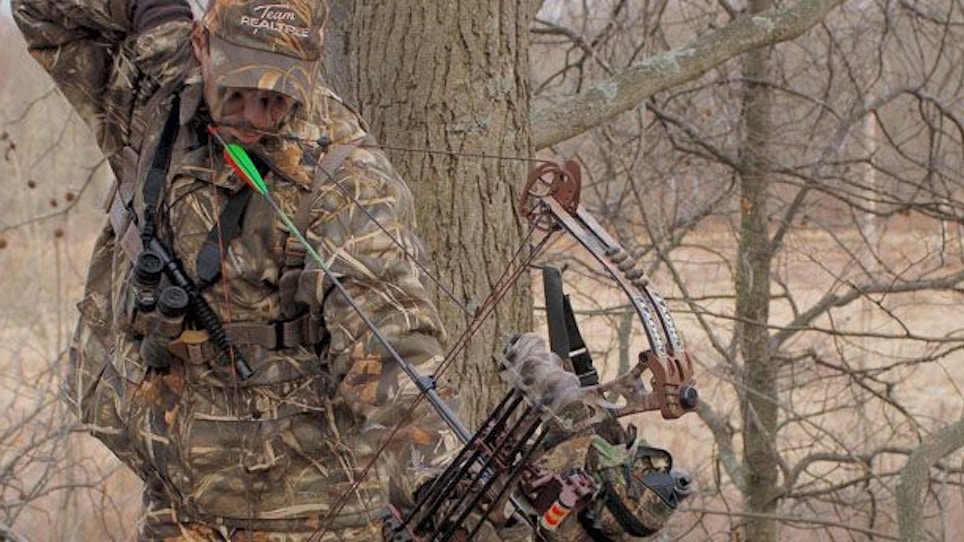 Know how and when to place your stand to keep your best sites productive. |
Treestand success hinges on being in the right place at the right time. The first step is discovering that place, and this comes through careful scouting. More than anything, the perfect stand location depends on deer travel to and from food sources. However, other seasonal factors like hunting pressure and general area deer habits that concentrate overall movement into funnels also have an effect.
Look At Topography And Wind Directions
Obviously, the best stand sites are those where prevailing winds carry scent away harmlessly to areas deer don’t travel. The edges of agricultural fields spilling into sudden drainages or overlooking impassible swamp or uninviting brush are good. Ridges and points are travelways, so placing stands slightly downhill from crests helps carry scent harmlessly away from passing deer while placing you on their level. A pond or beaver dam with a heavy trail cutting its corner or the edge of a major river with wind drifting over harmless water are examples of when bottoms can work to your advantage.
Consider Stand Height And Cover
How high should you place a stand? It depends on the lay of the land, available cover, shooting abilities, even particular deer disposition. Special considerations of scent-control and wind might require higher perches, but for the most part climb only as high as necessary to disguise your form. Typically, cover is more important than height. Look for stand sites backed by walls of clutter. Avoid places that silhouette you against bare sky. Another trick is to hang stands on the back side of tree trunks to use the trunk for shot-maneuvering cover.
Create A Clear Shooting Lane
It does little good to hang stands from a place where you cannot execute a clean shot. A bit of trimming to create shooting lanes may be what you need. Shooting lane construction is best before season. After the season opens, take a careful approach.
Cut saplings flush to the ground before covering stumps with fresh mud and leaves. Any branches or limbs at eye level receive need similar treatment. Smear them with mud to eliminate scent and camouflage bright, exposed wood. Carry away branches cut from higher places and toss them in a creek bed or over a bank. Or, to keep scent and disturbance to a minimum, simply tie branches out of the way using scent-free cord or trapping wire. Pull offending limbs or branches aside and lash or wire them in place to create a shooting lane with no cutting at all.
Stay Stealthy
Setting up any stand as unobtrusively as you can. Choose times when deer are elsewhere. If you can, erect stands during rain showers so scent quickly washes away. Multitudes of scent-control products are now available. Take advantage of them.
Stand hunting has become standard operating procedure anywhere whitetails are found because it works. Stand hunting is deadly, but only after you understand and practice the finer points of deployment.






